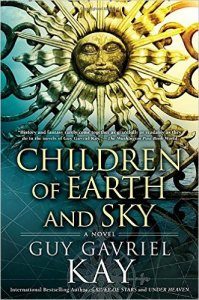Paula Guran Reviews In That Endlessness, Our End by Gemma Files
 In That Endlessness, Our End, Gemma Files (Grimscribe 978-0-578-75976-0, $20, 342pp, tp) January 2021.
In That Endlessness, Our End, Gemma Files (Grimscribe 978-0-578-75976-0, $20, 342pp, tp) January 2021.
Fifteen recent (the earliest appears to have been published in 2017) stories by Canadian writer Gemma Files combine to make a terrifically terrifying collection, In That Endlessness, Our End. Files doesn’t exactly expose the horror found in the mundane because, once the thin veneer of normalcy is scratched, very little is mundane about her fictional realm. Dreams are always nightmares, residences provide discomfort, offspring are no delight, encounters with the eldritch are common, families are invariably dysfunctional, relationships tend toward the doomed, and even the electrical grid is a thing to fear.
The indelible lead-off story, “This Is How It Goes”, is about a particularly nasty apocalypse in which folks literally split into two; the original and the “dupe” then fight to the death. A women trying to wire lighting in her condo discovers electricity can be evil (and that we all doomed). A character in “The Puppet Motel”, one of the best stories in the book, senses a beckoning tone of wrongness in a new luxe high-rise apartment. “Come Closer” relates how a creepy house moves about the neighborhood and entices even the wary to enter. A dentist invests in a film and gains access to its alluring aged-yet-ageless B-list star in “Cut Frame”. In “Sleep Hygiene”, a questionable therapy for a dangerously sleep-deprived insomniac leads to something worse than nightmares. Expectant parents are tortured by repulsive smells and disturbing music in “Always After Three”. In “Thin Cold Hands”, the survivor of a dreadful childhood mothers a strange daughter. “Venio” tells of a group of writers who play a prompting game that opens a door to something horrific. A young woman meets her paternal family in the strikingly descriptive “Look Up”, and whatever she (or the reader) might expect is not what happens. The power of cinema takes on an entirely different meaning in “The Church in the Mountains”. “Distant Dark Places” reveals a way to fix all the ills of the Earth, but “every new beginning comes from some other beginning’s end” and “Worm Moon” are also about an existential reset point. Anger is bottled in “Halloo” to an eventually devastating effect. “Cuckoo”, the collection’s concluding entry, deals with disappointed parental expectations. In That Endlessness, Our End is a must-read for horror aficionados who delight in dread.
Paula Guran has edited more than 40 science fiction, fantasy, and horror anthologies and more than 50 novels and collections featuring the same. She’s reviewed and written articles for dozens of publications. She lives in Akron OH, near enough to her grandchildren to frequently be indulgent.
This review and more like it in the January 2021 issue of Locus.
 While you are here, please take a moment to support Locus with a one-time or recurring donation. We rely on reader donations to keep the magazine and site going, and would like to keep the site paywall free, but WE NEED YOUR FINANCIAL SUPPORT to continue quality coverage of the science fiction and fantasy field.
While you are here, please take a moment to support Locus with a one-time or recurring donation. We rely on reader donations to keep the magazine and site going, and would like to keep the site paywall free, but WE NEED YOUR FINANCIAL SUPPORT to continue quality coverage of the science fiction and fantasy field.
©Locus Magazine. Copyrighted material may not be republished without permission of LSFF.







